Not all skirts are created equal—some swirl effortlessly, others bunch or sag. The secret lies in sewing technique.
The way a skirt is sewn—pleats, gathers, darts, or ruffles—affects how it fits, flows, and holds up. Buyers should understand these methods to spot quality and match styles to body types.
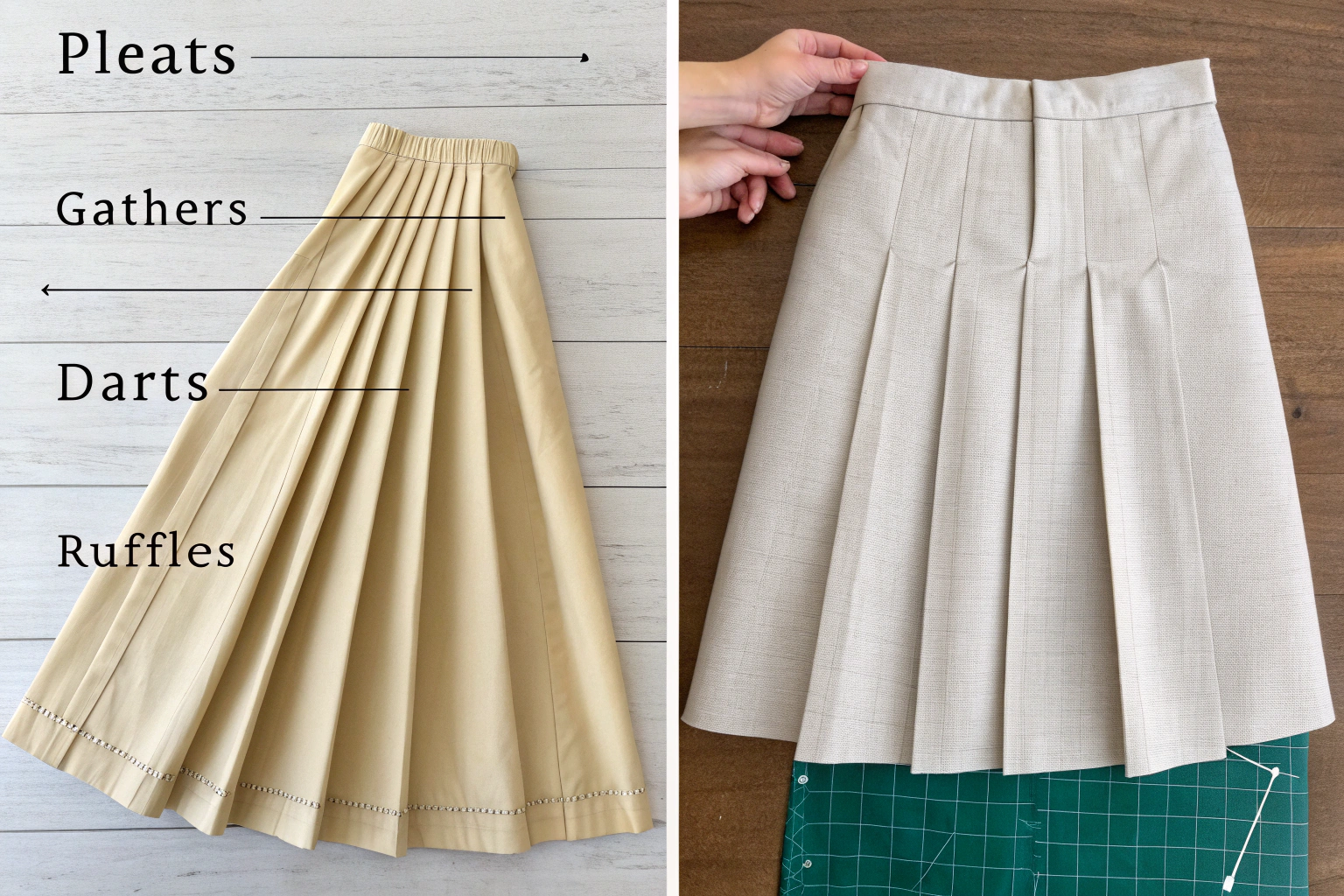
I’ve handled thousands of skirts in production, and the construction technique always tells me how it will move on the body, how long it will last, and who it’s best suited for. Here’s a guide for both buyers and boutique owners to spot—and sell—quality.
What are pleated skirts and how are they sewn?
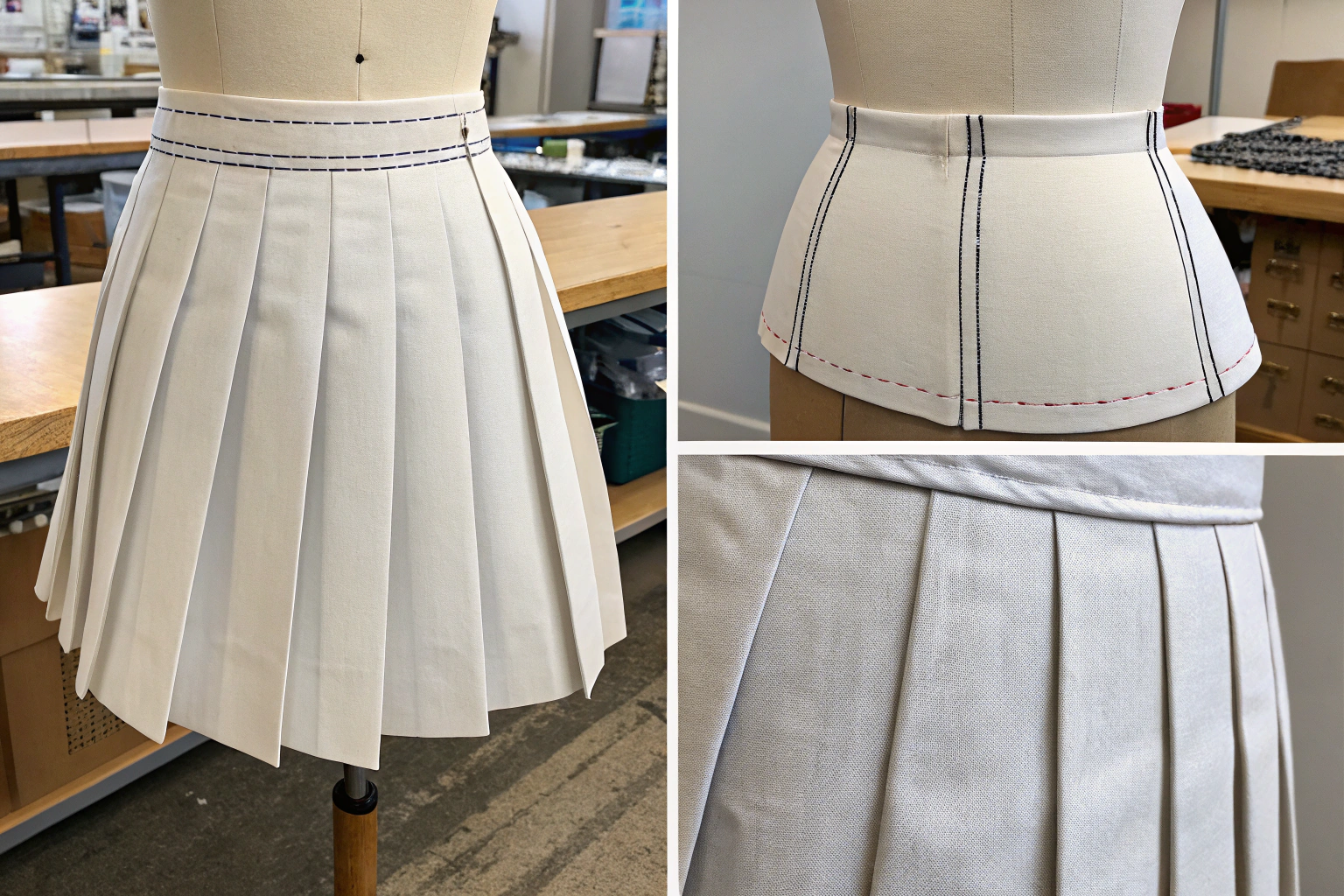
Pleats are folds in the fabric sewn at the top and free below, allowing movement while maintaining volume and shape.
There are knife pleats, box pleats, and accordion pleats—each requires careful spacing, pressing, and sometimes topstitching. In factories, pleats are heat-set to last longer. Good pleating uses even folds, clean stitching at the waistband, and fabric that holds shape (like polyester blends or twill).
| Pleat Type | Look | Movement Level | Common Fabrics |
|---|---|---|---|
| Knife Pleats | Sharp, uniform lines | Moderate | Polyester, rayon blends |
| Box Pleats | Fuller shape | High | Cotton, wool blends |
| Accordion | Fine, wavy folds | Very High | Chiffon, organza |
Check that pleats are symmetrical and reinforced where they begin—especially around the waistband.
How are gathered skirts stitched for shape?
Gathered skirts look easy—but poorly done, they bulk at the waist.
Gathered skirts use loose running stitches to draw fabric into soft, even bunches. The gathers are sewn into a waistband or yoke.
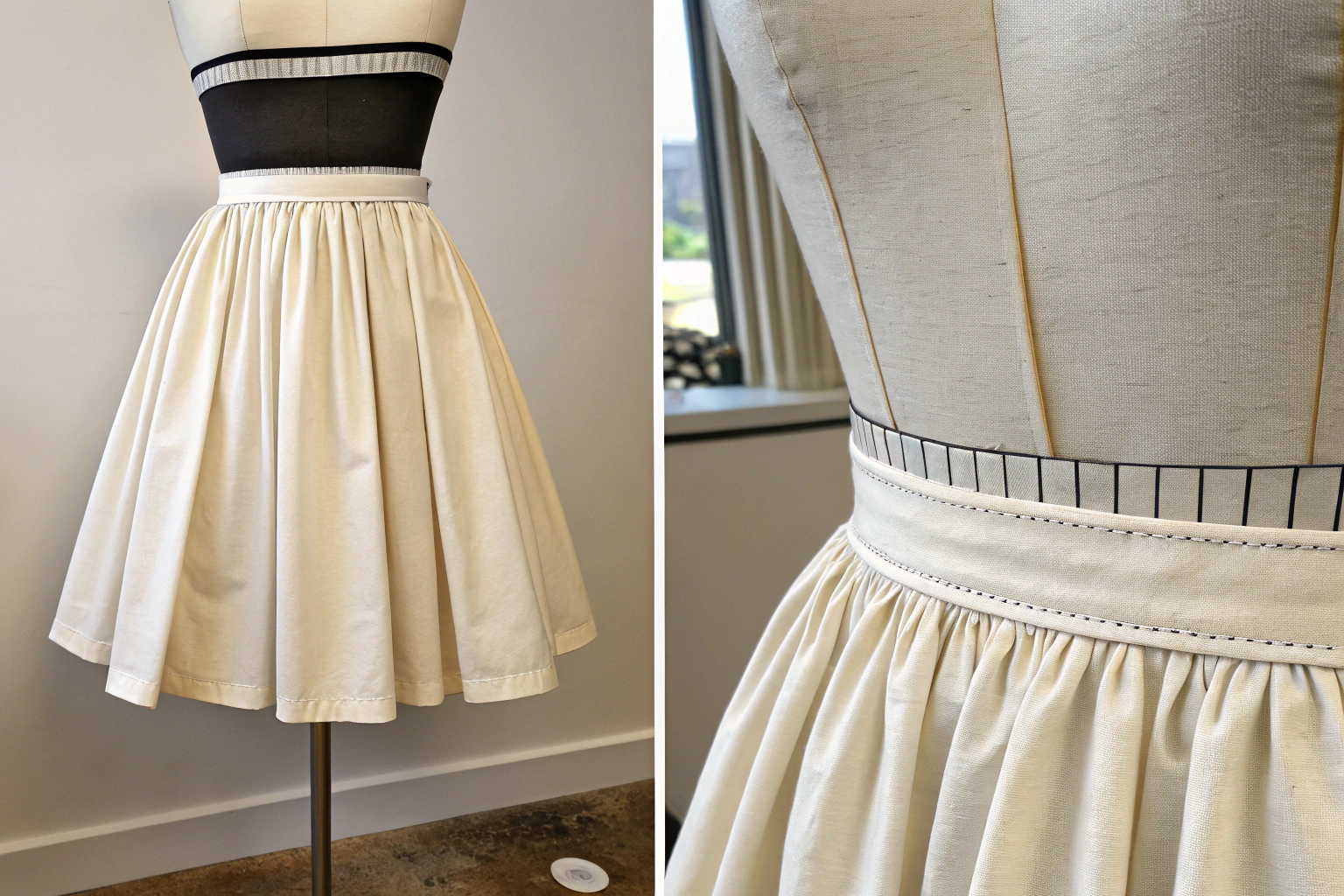
I’ve seen cheap skirts where the gathers aren’t evenly distributed—this creates lumps. Quality gathered skirts use double or triple rows of stitching for smoother lines and strength. Lightweight cottons, chiffons, or linen blends gather best.
The trick is balance: too many gathers = puffiness, too few = sagging. For plus-size or curvy bodies, gathered skirts should be sewn with care to avoid adding width at the wrong points.
What’s the difference between darts and princess seams?
Fitted skirts rely on shaping techniques that contour the body.
Darts are angled folds sewn into fabric to remove excess and shape to the waist or hip. Princess seams are curved seams that run the full length of a skirt for a more tailored fit.
Darts are common in pencil skirts—they allow a clean taper without bulk. Princess seams appear in high-end tailoring and help the fabric hug curves smoothly. Both should lie flat without puckering.
| Technique | Best For | Fabric Type | Notes |
|---|---|---|---|
| Darts | Pencil, office skirts | Medium-weight | Invisible finish is ideal |
| Princess Seams | Formal/midi skirts | Stiff or stretchy | Adds elegant shaping |
Inspect if the seam lines align cleanly and if the dart ends are stitched flat.
How are ruffles added to skirts?
Ruffles are strips of fabric gathered or pleated before being sewn onto the main skirt. Placement, fabric weight, and edge finish define quality.
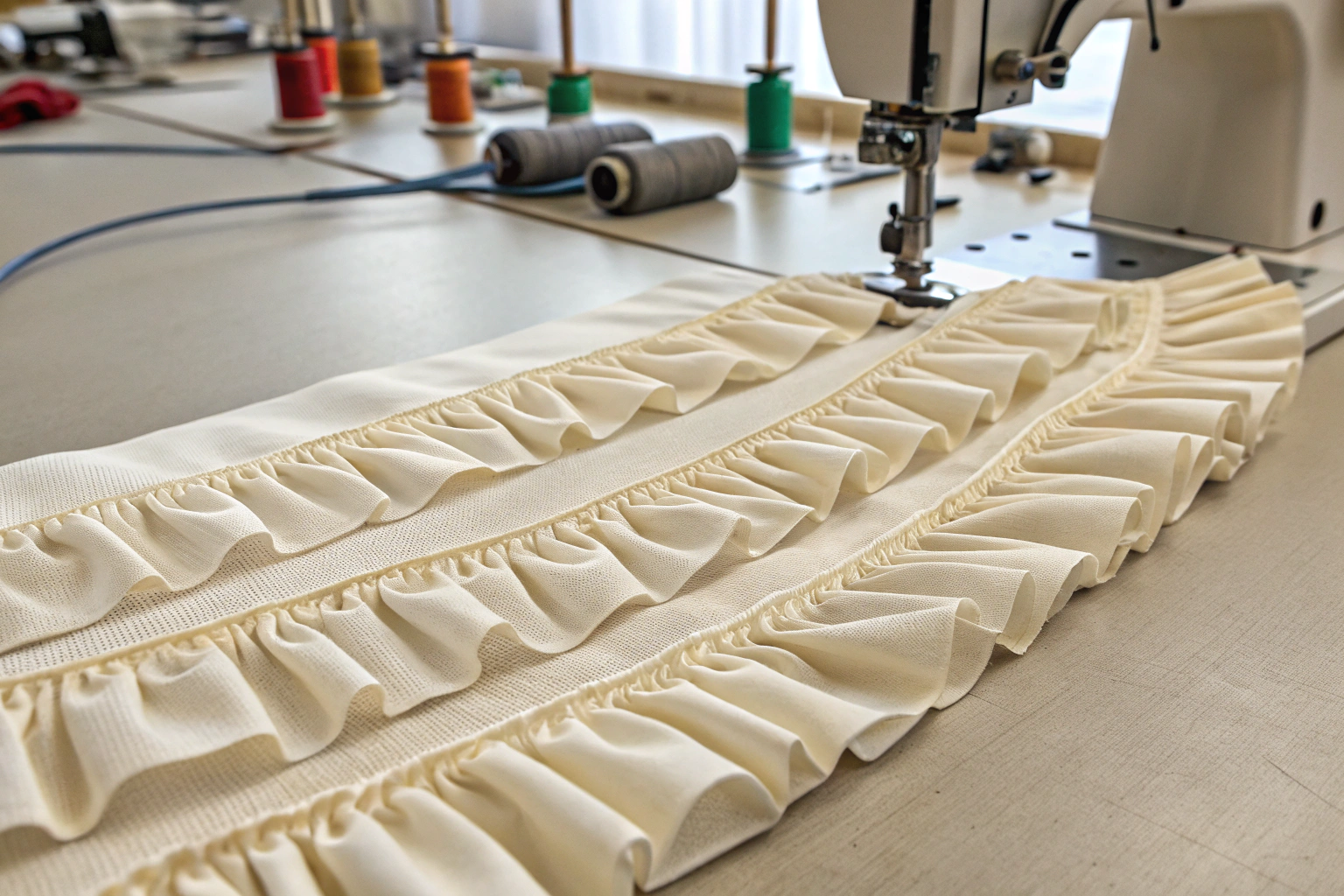
In production, ruffles must be evenly gathered and cleanly serged at the edges. Rolled hems, baby hems, or bias bindings are best. I always feel the ruffle: if it’s limp or heavy, it won’t drape properly.
Most fashion skirts use ruffles for style accents—on hems, diagonals, or layers. Lightweight fabrics like voile, chiffon, or rayon crepe work best.
Are circle skirts cut differently?
Circle skirts are cut from a full circle or partial arc of fabric, giving natural flare without pleating or gathering.
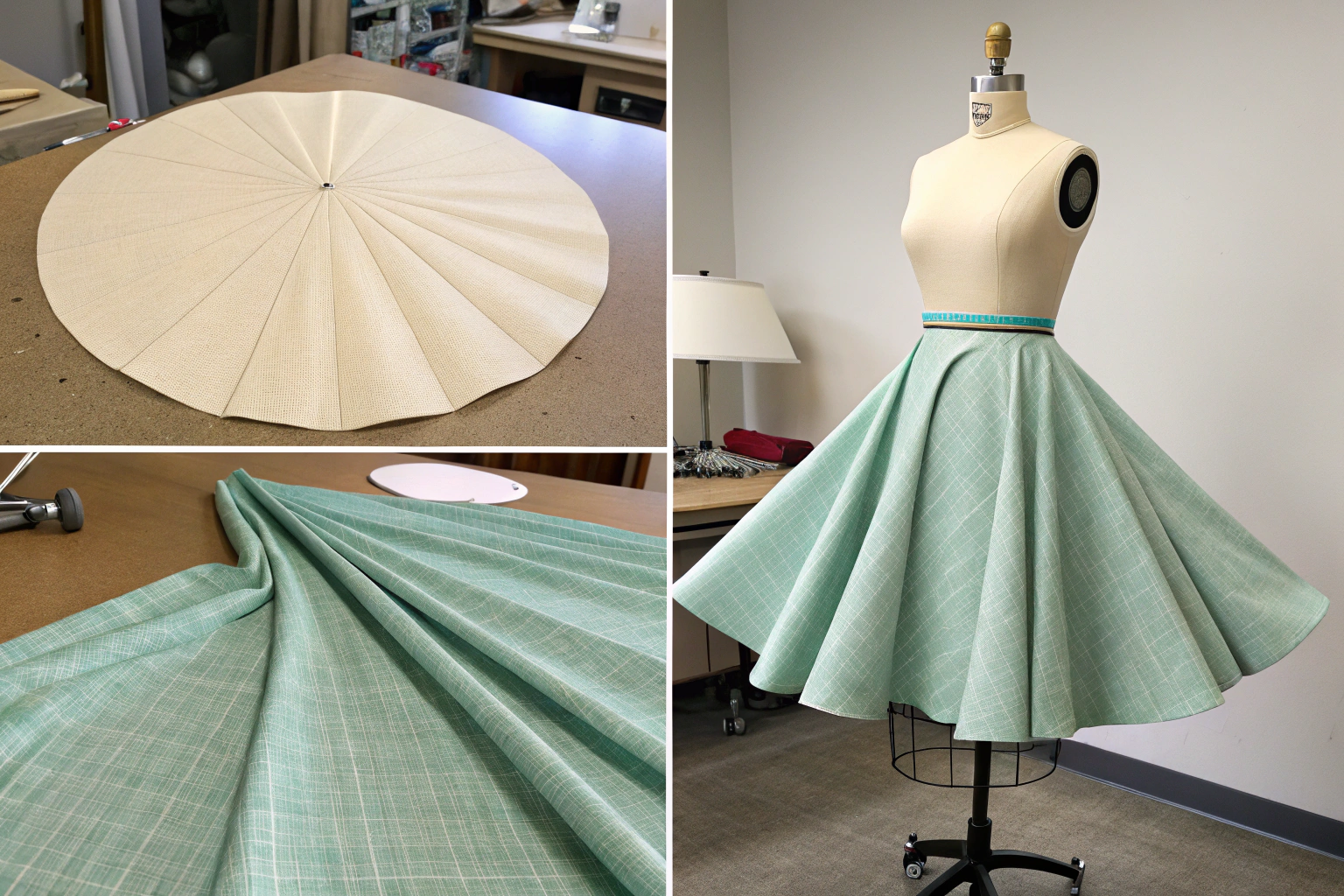
This design uses math—a full circle means more fabric and more flow. But it also means more waste and higher cost. You’ll find circle cuts in swing skirts, dancewear, or vintage looks. Hemming a curve takes skill: look for even, smooth hem lines.
Great circle skirts usually feel lighter, fall better, and twirl with ease. Buyers should check for fabric grain and stretch direction—cheap versions twist or sag over time.
What finishing details should buyers inspect?
Even beautiful fabric falls flat without strong finishes.
A quality skirt has neat hems, strong waistbands, lined interiors (when needed), and smooth zipper insertion or elastic casing.
I always flip a skirt inside out before recommending it. Look for:
- Clean hemline: folded twice or serged, no loose threads
- Waistband: reinforced, not bunched or wrinkled
- Zipper/Elastic: lies flat, moves easily
- Topstitching: even, straight, tension balanced
Skirts with lining also show better durability, especially in sheer or drapey styles.
Conclusion
Understanding skirt sewing techniques helps buyers make smarter choices—whether sourcing for a boutique or shopping for personal style. Pleats add structure. Gathers add softness. Darts and princess seams shape the body. Ruffles offer volume and flair. Circle cuts bring flow. And finishes like waistbands and hems signal craftsmanship. If you know how a skirt is made, you know how it will wear—and how it will sell.

